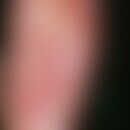DefinitionThis section has been translated automatically.
A digitalis antitoxin is the so-called "antidigoxin Fab." = fragment antigen binding (Kurath 2013).
General informationThis section has been translated automatically.
Digitalis antitoxin is used to promote the elimination of digitalis in cases of digitalis intoxication (Böhm 2000).
Pharmacodynamics: The onset of action occurs after an i. v. injection after approximately 30 - 60 min (Kurath 2013).
Indication:
- Severe and life-threatening digitalisin into xication (Pellegrino 2019).
- Hyperkalemia in the context of digitalisin intoxication.
- Poisoning with cardenolides = cardiac-active steroid glycosides such as oleander (especially with T. peruviana, the yellow oleander [Eddleston 2003]), lily of the valley, etc.
These substances all contain digitalis in varying concentrations (Kurath 2013).
- Women with preeclampsia who are far from term and are EDLF (Endogenous digitalis-like factors) positive (Lam 2013).
Dosage and route of administration
One ampoule contains 80 mg of antidigoxin- Fab (Kurath 2013). 80 mg of antidigoxin- Fab binds 1 mg of digitalis, so that the digoxin- level decreases by 1ng / ml and for digitoxin by 10 ng / ml (Flake 2021). The dosage depends on the amount or level of ingested digitalis (Kurath 2013).
- Known amount of digitalis:
- Digoxin: serum concentration in ng / ml x 0.56 x KG / 1,000 = stock in mg.
- Digitoxin: serum concentration in ng / ml x 0.56 x bw / 1,000 = stock in mg, antibody dose i. v. in mg = stock in mg / 0.015 (Weihrauch 2020).
- Unknown amount of digitalis:
Bolus of 160 mg as a short infusion in 5% glucose over 20 min, then 20 mg / h over 12 h (Flake 2021).
Since hyperkalemia increases the risk of AV block, (Lemmer 2007), antidote treatment with Fab antibody fragments (see above) should be given immediately in case of hyperkalemia (Mori 2012). If no antidote is available, the shift of potassium into the intracellular space can be treated with glucose, insulin, and bicarbonate (Gertsch 2007).
Contraindication
- Allergy
To rule out an existing allergy to the antibodies from sheep, a small amount of the antitoxin should first be administered intracutaneously (Kurath 2013).
Alternative treatment
CytoSorb treatment represents an alternative therapy for patients with digitalisin intoxication that is both readily available, efficient, and less costly (Breuer 2021).
Preparations
- Antidigoxin Fab fragments such as DigiFab (Böhm 2000) or Digibind (Nielsen 2013), Lanoxin. Digibind has been on the market in the USA since 1986 (Dasgupta 2007 / Kokate 2011), DigiFab 2001 (Dasgupta 2019).
You might also be interested in
OccurrenceThis section has been translated automatically.
The incidence of chronic digitalis intoxication in digitized patients varies between 6 - 23 %. It occurs particularly frequently in elderly patients with reduced body weight and in patients with renal insufficiency. Women are more frequently affected than men - possibly due to relative overdose (Gertsch 2007).
Poisonings with cardenolides occur in tens of thousands annually in Southeast Asia (Roberts 2006).
Note(s)This section has been translated automatically.
Digitalis antitoxin is not approved in Germany, but is used. It is obtained through the US pharmaceutical company Logosys. In 2013, it was decided in accordance with the Pharmacy Operations Ordinance § 15 Para. 2 ApBetrO that digitalis antitoxin must be stored or available at short notice via the respective state chambers of pharmacists. This was associated with a cost of EUR 64,000 for all pharmacists subject to the chamber. In 2019, a streamlining of Section 15 (2) ApBetrO was therefore requested by the Drug Commission of German Pharmacists (AMK) and approved by the federal government (Apothekerkammer Berlin 2019 / Schumbach 2013).
Treatment with digitalis antitoxin is very cost-intensive (Eddleston 2003). For example, one ampoule cost 400 EUR at Logosys in 2013. Between 10 - 80 ampoules are required per patient (Apothekerkammer Berlin 2019 / Schumbach 2013).
LiteratureThis section has been translated automatically.
- Apothekerkammer Berlin: Drucksache L 6 zu 4.5.1 und 4.5.2
- Böhm M et al. (2000) Reference series on cardiology: heart failure. Georg Thieme Verlag Stuttgart / New York 56 - 66
- Breuer T G K et al. (2021) Successful Treatment of Severe Digitoxin Intoxication with CytoSorb® Hemoadsorption. Blood Purif 50 (1) 137 - 140
- Dasgupta A (2007) Handbook of drug monitoring methods: therapeutics and drugs of abuse. Humana Press New Jersey 119
- Dagupta A (2019) Issues of Interferences in Therapeutic Drug Monitoring. Biotin and other Interferences in Immunoassays: A Concise Guide. Elsevier Urban and Fischer Publishing https://www.sciencedirect.com/topics/pharmacology-toxicology-and-pharmaceutical-science/digoxin-antibody-f-ab-fragment
- Eddleston M et al (2003) Acute plant poisoning and antitoxin antibodies. Journal of Toxicology: Clinical Toxicology (41) 309 - 315.
- Flake F et al (2021) Emergency medications. Elsevier Urban and Fischer Publishers Munich 46
- Gertsch M et al (2007) The ECG: at a glance and in detail. Springer Verlag Berlin / Heidelberg 563 - 565
- Herold G et al (2020) Internal medicine. Herold Publishers 222
- Kokate C et al (2011) Textbook of pharmaceutical biotechnology. Elsevier Urban and Fischer Publishers India 6
- Kurath S et al (2013) Pediatric emergencies: act safely, medicate correctly. Schattauer Verlag 70, 78
- Lam G K et al (2013) Digoxin antibody fragment, antigen binding (Fab), treatment of preeclampsia in women with endogenous digitalis-like factor: a secondary analysis of the DEEP Trial. Am J Obstet Gynecol. 209 (2) 119. e1 - 6
- Lemmer B, Brune K (2007) Pharmacotherapy: clinical pharmacology. Springer Verlag Heidelberg 74
- Nielsen S V et al. (2013) Antidigitalis Fab-fragment for treating poisoning from a foxglove plant. Ugeskr Laeger 175 (24) 1701 - 1702.
- Pellegrino M et al (2019) Digoxin-specific Fab and therapeutic plasma exchange for digitalis intoxication and renal failure. Am J Emerg Med. 37 (4) 798. e3 - 798. e5
- Roberts D et al (2006) Antidotes for acute cardenolide (cardiac glycoside) poisoning. Cochrane Database of Systematic Reviews. https://doi.org/10.1002/14651858.CD005490.pub2.
- Schumbach K (2013) Digifab costs pharmacists 64,000 euros. https://www.apotheke-adhoc.de/nachrichten/detail/apothekenpraxis/notfalldepot-digitalis-antitoxin-digifab-kostet-apotheker-64000-euro/hfalldepot-digitalis-antitoxin-digifab-kostet-apotheker-64000-euro/
- Weihrauch T R et al. (2020) Internistische Therapie 2020 / 2021 Elsevier Urban und Fischer Verlag Germany 126




